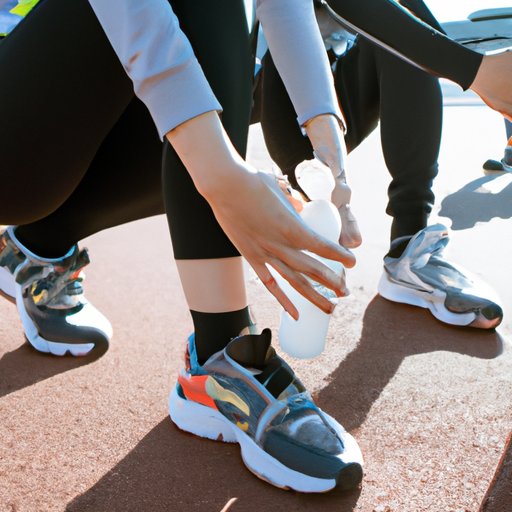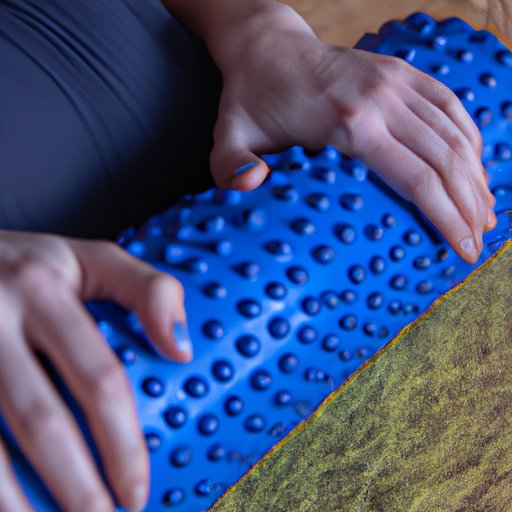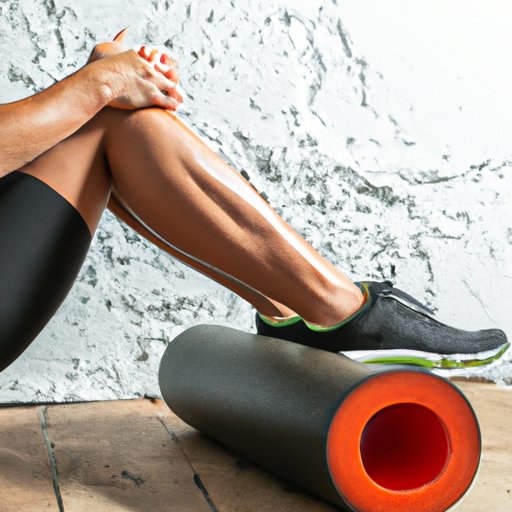Introduction
Feeling sore after a workout is a common experience. This type of soreness—known as delayed onset muscle soreness (DOMS)—is caused by microscopic tears in the muscles that lead to inflammation and pain. While DOMS can be uncomfortable, it’s generally nothing to worry about; it’s a sign that your muscles are adapting and growing stronger. However, there are some steps you can take to minimize this soreness and improve your overall recovery.

Stretch Before and After Exercise
Stretching before and after exercise can help to reduce soreness and speed up the recovery process. Stretching increases blood flow to the muscles, which helps to bring oxygen and nutrients to the area. It also increases flexibility and range of motion, which can help to reduce the risk of injury. Additionally, stretching before exercise can help to prepare the muscles for the upcoming activity, while stretching after exercise helps to relax the muscles and reduce tension.
There are several types of stretches that can be beneficial before and after exercise. Static stretching, which involves holding a stretch for 30 seconds or more, is a good choice for after exercise. Dynamic stretching, which involves active movements such as lunges and arm circles, is a better option before exercise. Other forms of stretching such as foam rolling, yoga, and Pilates can also be helpful.

Warm Up and Cool Down Properly
Warming up and cooling down are important aspects of any workout routine. Warming up helps to prepare your body for exercise by gradually increasing your heart rate and loosening up your muscles. This can help to reduce the risk of injury and improve performance. Cooling down helps to gradually decrease your heart rate and restore your muscles to their pre-exercise state. This helps to reduce soreness and speed up recovery.
When warming up, focus on dynamic stretches that involve active movements. This will help to increase blood flow and loosen up your muscles without causing too much fatigue. When cooling down, static stretching and foam rolling can be beneficial. You should also try to drink plenty of water both before and after your workout.
Increase Intensity Gradually
If you’re new to exercise or returning to exercise after a break, it’s important to increase the intensity of your workouts gradually. Starting off too hard can lead to excessive soreness and even injury. To avoid this, start with low-intensity exercises and gradually increase the intensity over time. For example, if you’re starting a running program, begin with short distances and slow speeds and gradually increase the distance and speed over time.
It’s also important to give your body enough rest between workouts. This will give your muscles time to recover and reduce the risk of injury and excessive soreness. Aim for at least one full day of rest each week, but listen to your body and take additional rest days if needed.
Improve Hydration and Nutrition
Good hydration and nutrition are essential for proper recovery after exercise. When you exercise, your body uses energy from carbohydrates and fat stored in your muscles. Replenishing these stores with nutritious foods and fluids can help to reduce soreness and improve recovery. Aim to eat complex carbohydrates, lean proteins, and healthy fats within two hours of exercise.
It’s also important to stay hydrated during and after exercise. Drinking plenty of fluids can help to replace those lost through sweat and improve recovery. Aim to drink 16–20 ounces of water two hours before exercise and 8–12 ounces of water every 15 minutes during exercise. After exercise, continue to drink fluids throughout the day.

Use Foam Rolling or Massage
Foam rolling and massage can be beneficial for reducing soreness and speeding up recovery. Foam rolling is a type of self-myofascial release that involves rolling a foam cylinder over tight areas of your muscles to release tension and reduce soreness. Massage therapy helps to increase circulation, reduce muscle tension, and improve flexibility. Both of these techniques can help to reduce soreness and improve recovery.
When foam rolling, use a moderate pressure and roll slowly over the affected area. Focus on areas that feel particularly tight or sore. If you’re using a massage therapist, discuss your goals and preferences beforehand to ensure you get the most out of the session.
Get Adequate Sleep
Getting adequate sleep is essential for proper recovery after exercise. During sleep, your body repairs and rebuilds muscle tissue, so it’s important to get enough rest to allow this process to occur. Aim for 7–9 hours of sleep each night, and try to go to bed and wake up at the same time each day. Avoid drinking alcohol or caffeine late at night, as these can interfere with your sleep quality.
In addition to getting enough sleep, it’s also important to manage stress levels. Stress can interfere with recovery, so it’s important to find ways to manage stress such as meditation, mindfulness, and journaling. Exercise can also be beneficial for managing stress levels.
Use Proper Form and Technique
Using proper form and technique is essential for avoiding injuries and reducing soreness. Always warm up before exercise and focus on using correct form and technique during your workout. If you don’t know how to do an exercise correctly, ask a qualified fitness professional for advice. Taking the time to learn proper form now can help to prevent injuries and reduce soreness in the long run.
Additionally, make sure to listen to your body and adjust the intensity of your workouts accordingly. If you’re feeling particularly sore or tired, take a break or reduce the intensity of your workout. Pushing yourself too hard can lead to excessive soreness and even injury.
Conclusion
Feeling sore after a workout is normal, but there are steps you can take to reduce this soreness and speed up the recovery process. Stretching before and after exercise, warming up and cooling down properly, increasing intensity gradually, improving hydration and nutrition, using foam rolling or massage, getting adequate sleep, and using proper form and technique can all help to reduce soreness and improve recovery.
(Note: Is this article not meeting your expectations? Do you have knowledge or insights to share? Unlock new opportunities and expand your reach by joining our authors team. Click Registration to join us and share your expertise with our readers.)
